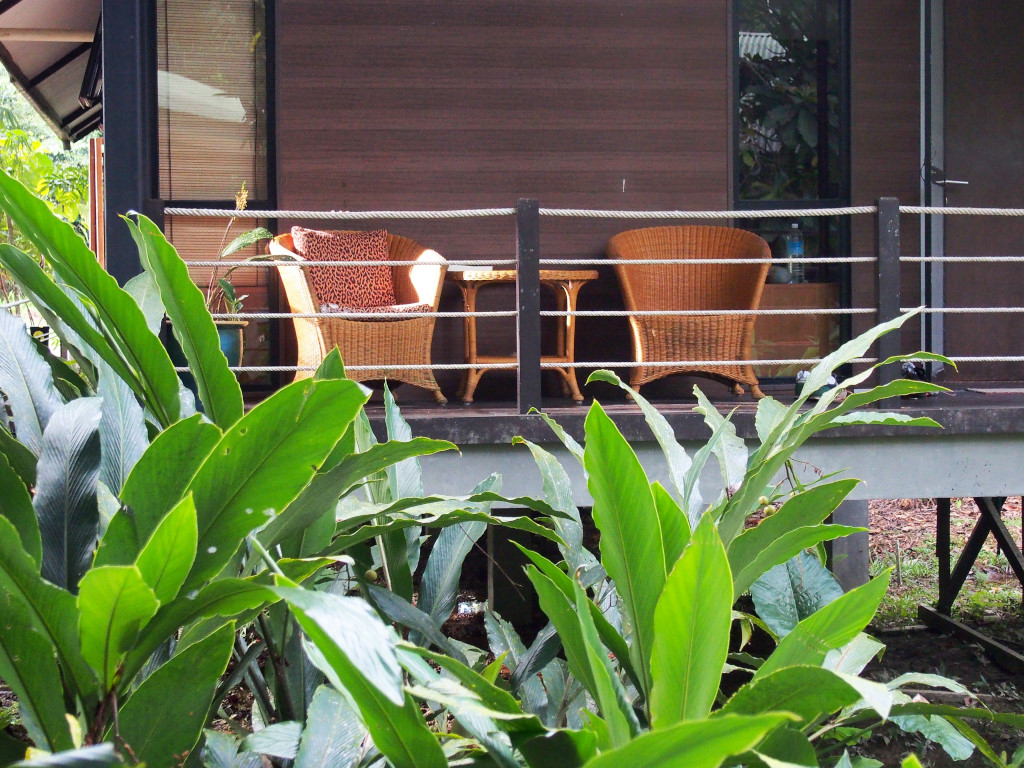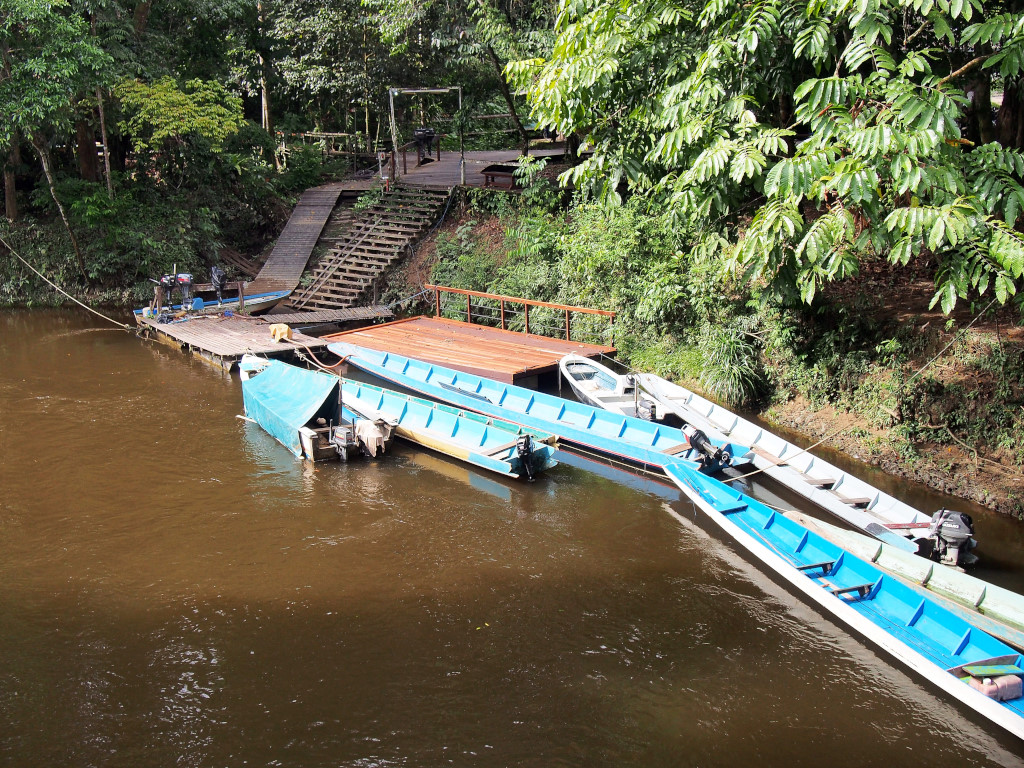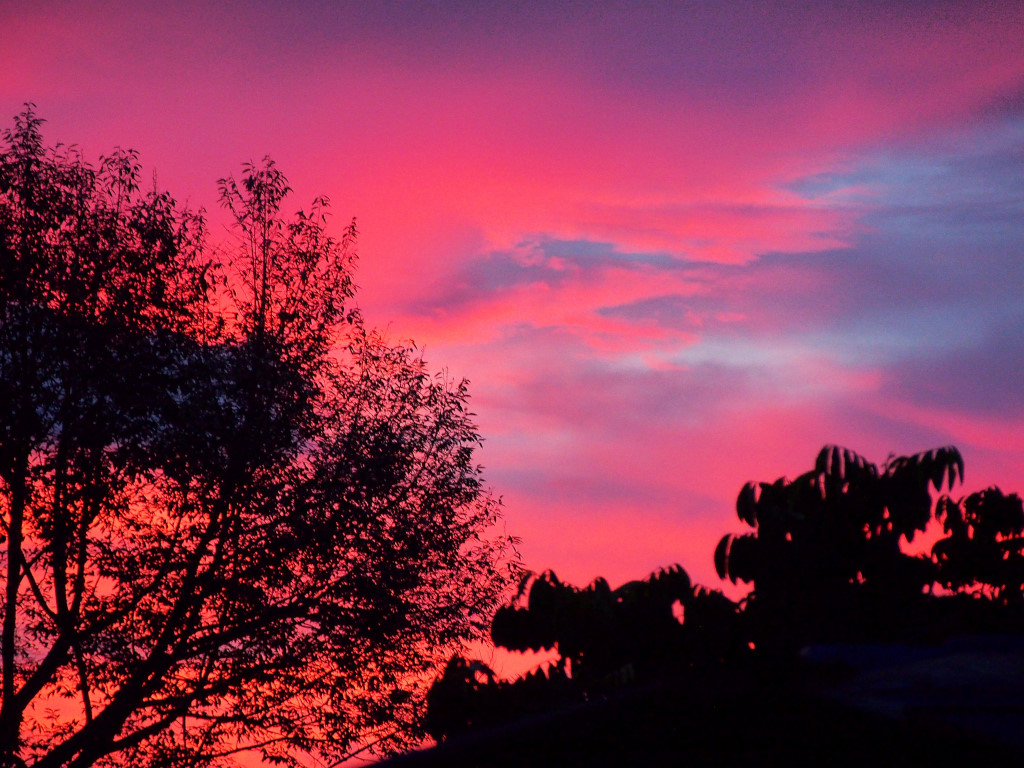May 3rd, 2015
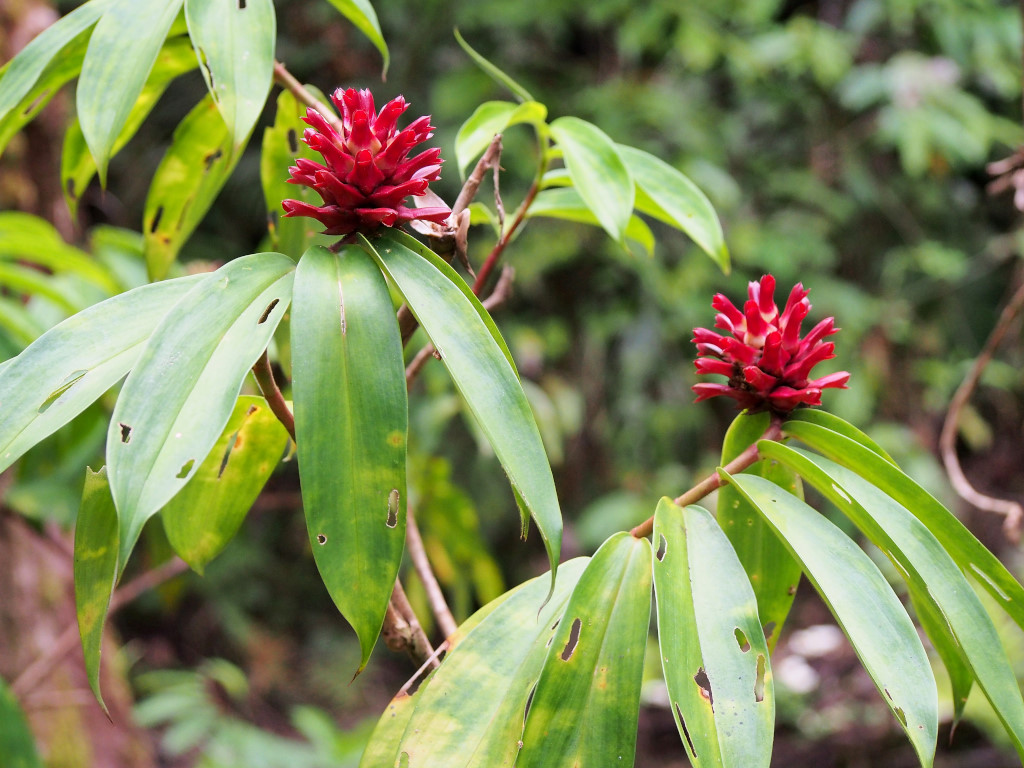
Having spent a few days settling into Miri, I am off again, this time to the interior of the island of Borneo, to Gunung Mulu National Park, probably one of the most iconic parks in Borneo, and given the rate of deforestation, all the more valuable as time goes on.
The taxi ride back to the Miri airport is smooth and provides daytime views of the relatively innocuous exurbs of Miri.
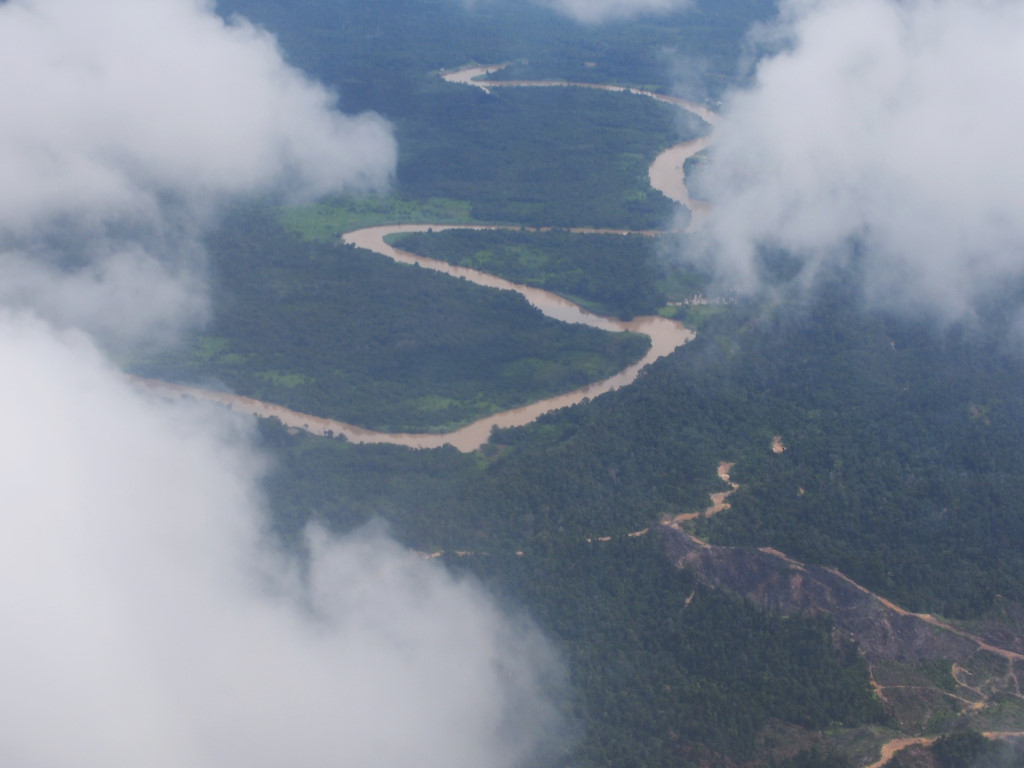
At the airport, a handful of people cluster around the gate prior to embarkation. The torrential downpours of recent days are thankfully absent, the sky marked by no more than scattered tufts of cotton.
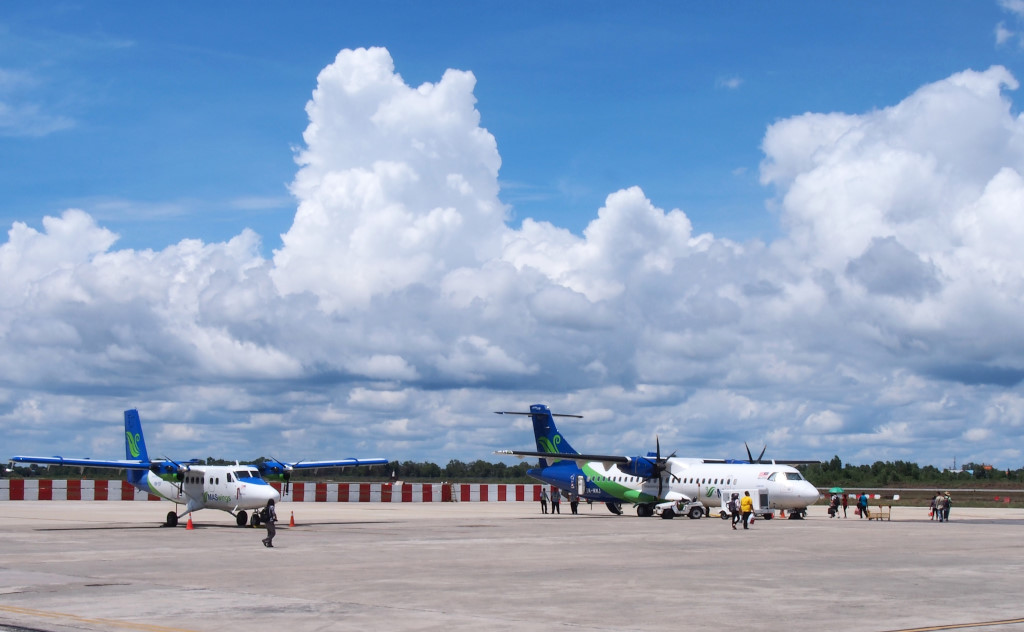
It seems improbable that there would be regular flights from Miri to Gunung Mulu National Park, but the Malaysian government apparently operates the MASWings subsidiary via Malaysian Airlines at substantial loss, expressly for the purpose of buying popularity with the Sarawak electorate.

Occasional bumps occur as we rise through the clouds. Flying closer to the ground, the landscape below us remains well-defined. Happily, the plane is comfortable and offers ample room to stretch the legs, especially with the limited number of passengers flying today. The sinuous Baram river weaves below us as we progress southeastward.
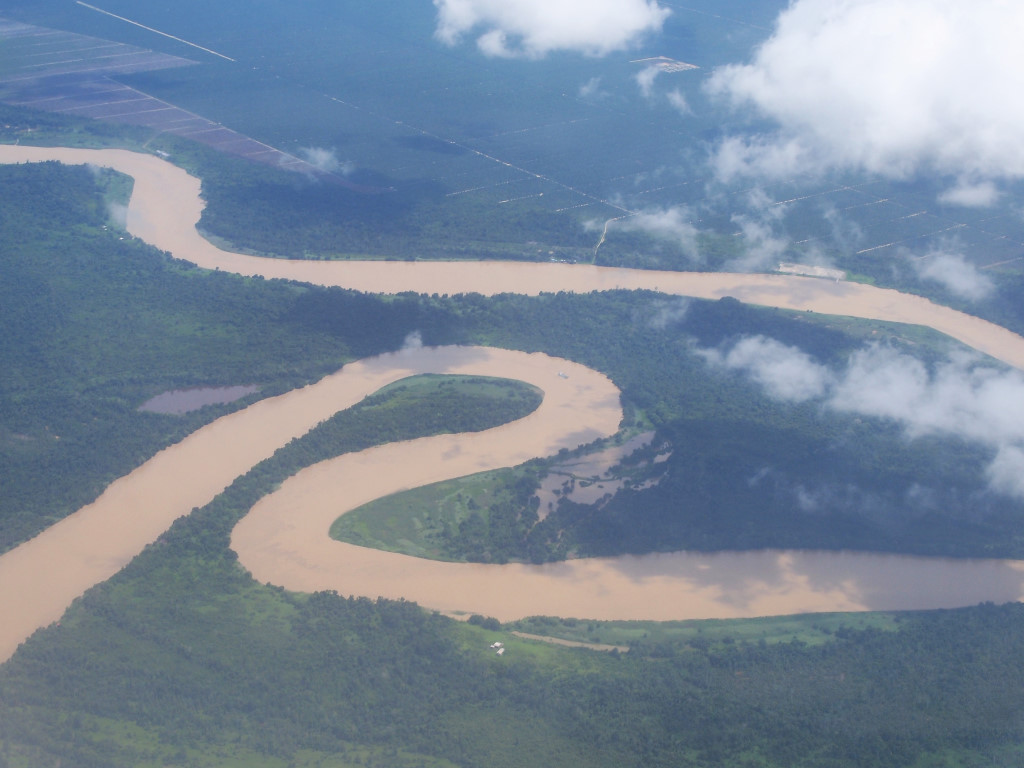
The agriculture and oil palm plantations soon revert to jungle as we advance along the southern border of Sarawak and Brunei. The flat topography rises towards the mountains of Gunung Mulu park, the muddy Baram river continuing on its intricate course southwards towards Long Lama and Long Miri.
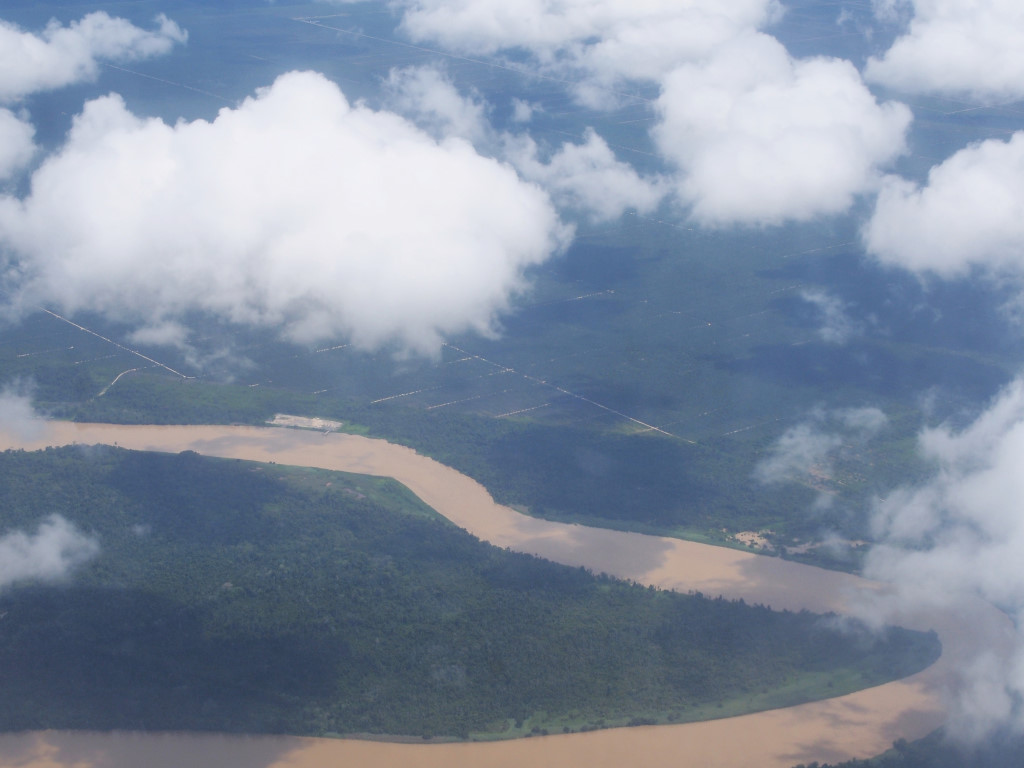
The Viking Twin-Otter propeller plane descends languidly towards the carpet of green, the mountains rising around us as the dense jungle increases in definition, the plane finally landing on the park’s remote landing strip. The setting is utterly exotic, the initial impressions one of some displaced Shangri-La.
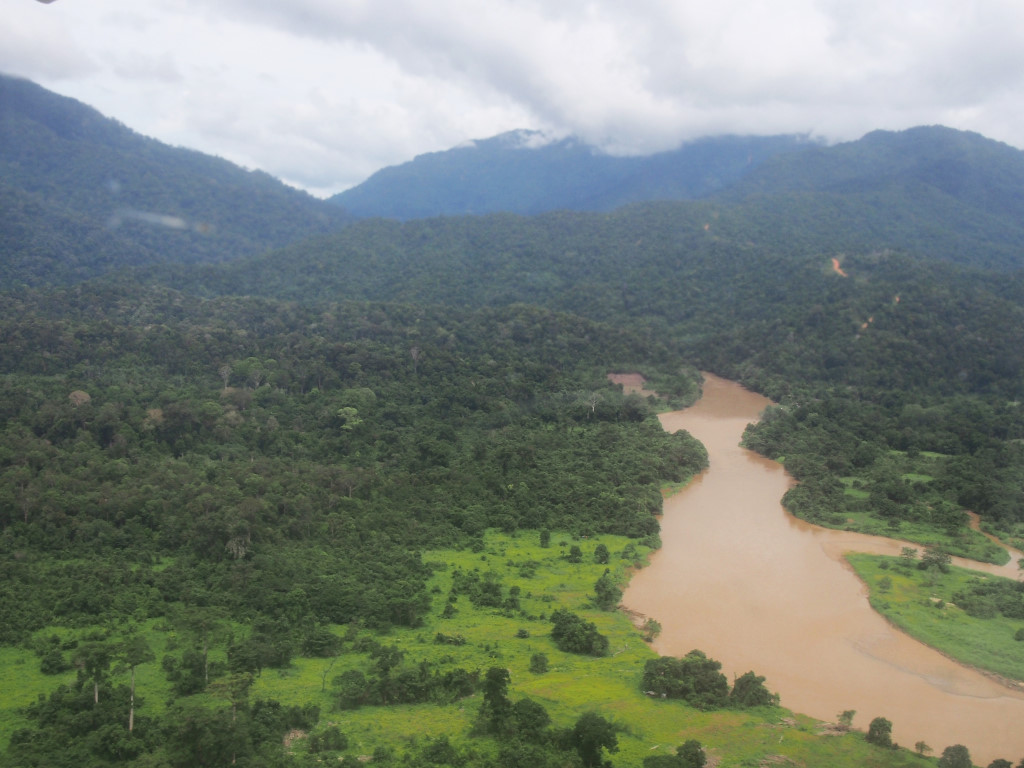
A few touts straggle at the airport terminal, which is more of a shack isolated in the jungle setting, flanking the long asphalt strip the small planes take off and land on.
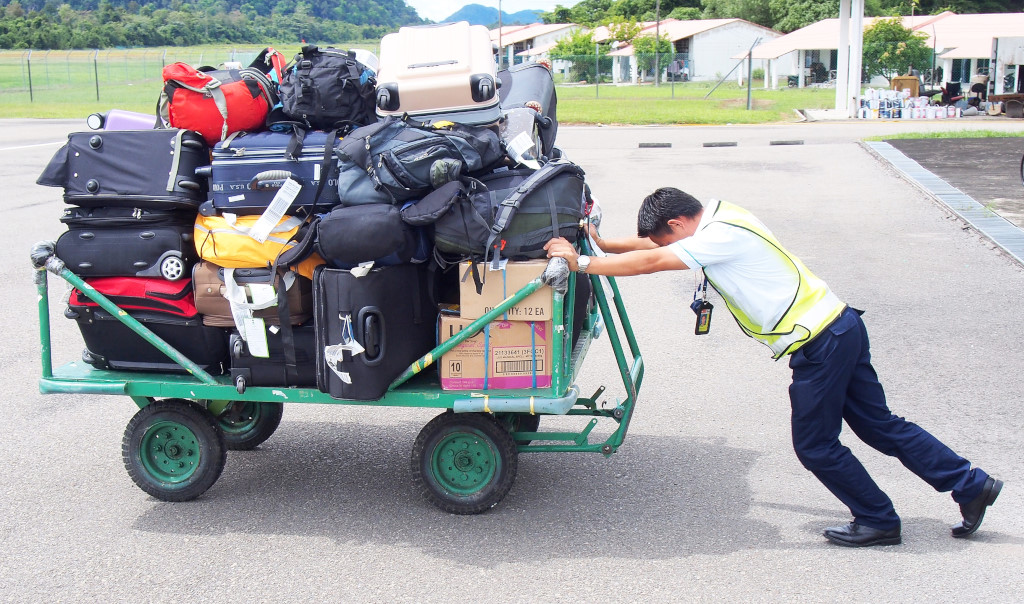
Apparently, there are some inexpensive places to stay within a short driving distance, and near the park entrance. I agree to be ferried to the same bed and breakfast on the other side of the river from the park entrance as my new-found local friend who has just arrived from Kuala Lumpur. Her demeanour does little to indicate the nature of the lowly shack we are to be deposited at.

The wooden plank building is located on a scruffy property with adjacent run-down bungalows set at odd angles. Access to the building is by means of a rickety staircase to the raised first floor, our shoes being deposited on the small outside landing.
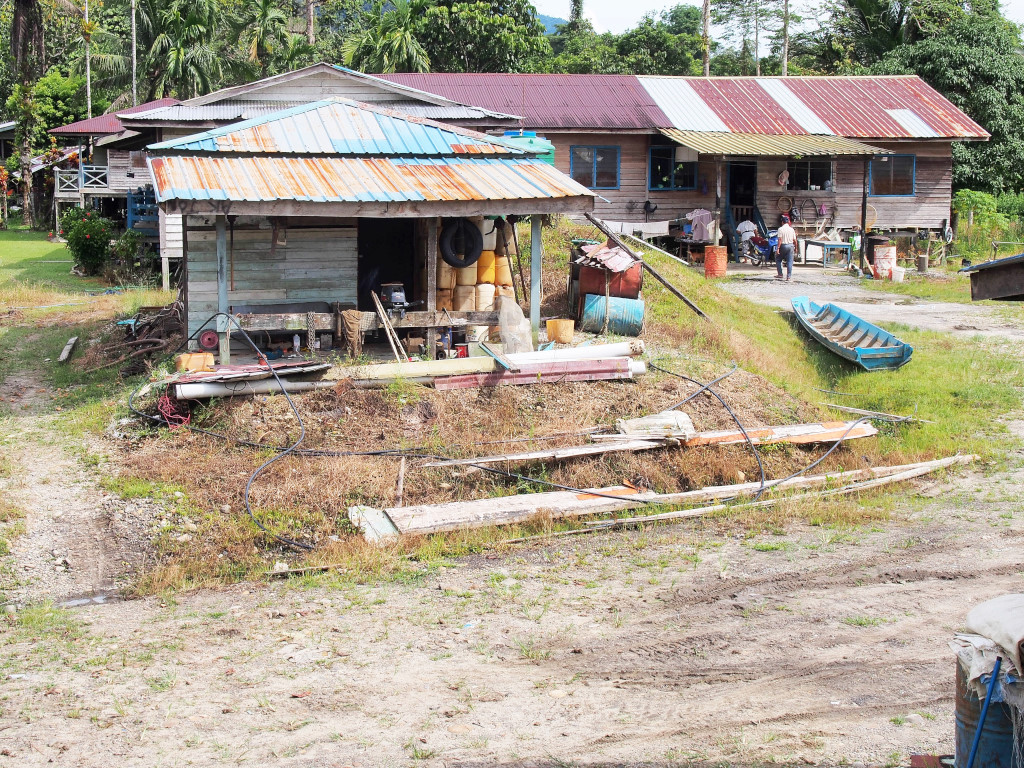
Broaching the dark hallway that runs the length of the building reveals uneven flooring covered by a tatty coat of lino. The room I am shown housing a simple washbasin, large window, rickety bed with a worn, paper-thin mattress and tatty sheet. The room is somewhat spacious, but represents a level of the rustic that I hadn’t been prepared for. The interior of the building is all the more depressing due to lack of electricity, which apparently is only available for several hours in the evening and morning.
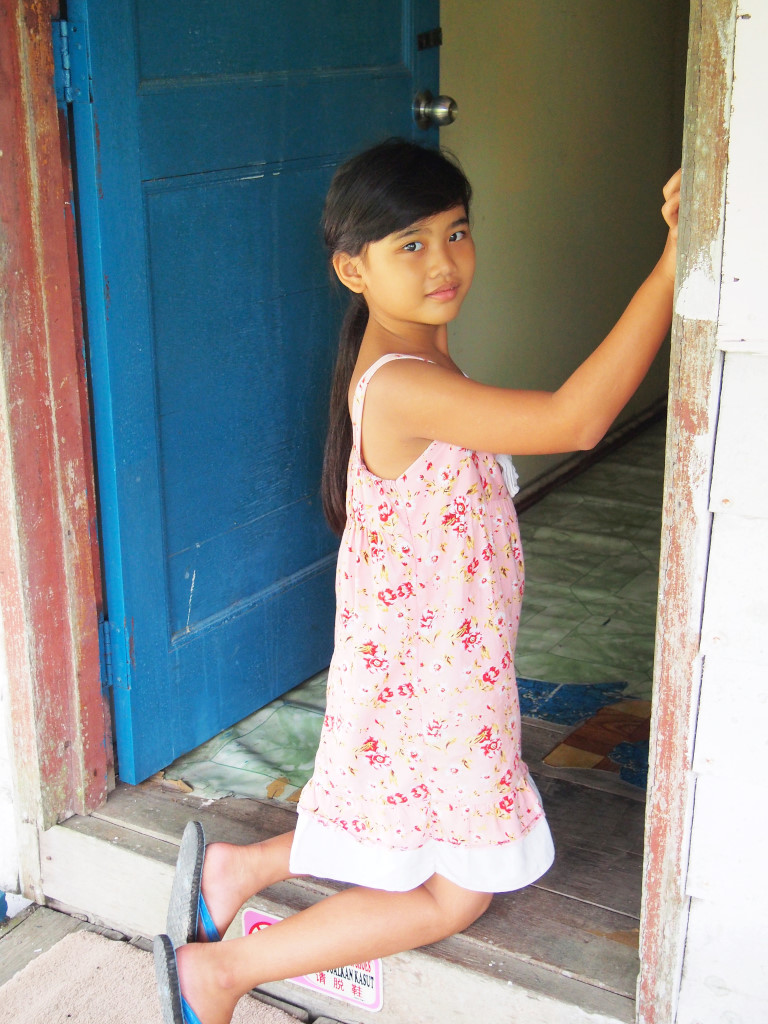
As convinced as the woman that I accompanied from the airport was that this would represent the apogee of comfort for the setting, I couldn’t disagree more.

I loll on the barren bed frame, exhausted from the humidity and heat, waiting somewhat pointlessly from the intermittent downpours to cease, not a very likely event for a locale deep at the centre of the island of Borneo. But there is a world out there that I want to see, in particular, Gunung Mulu park, the entrance of which is apparently not that far, just along the river.
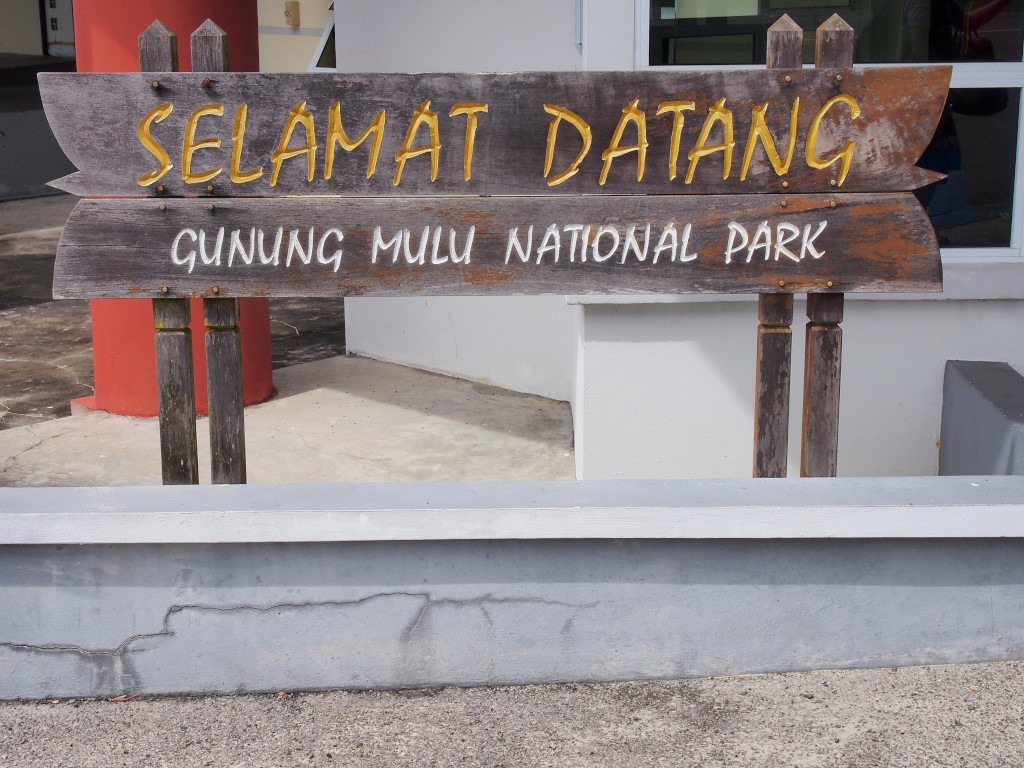
Since the woman I came with now intends on making her way towards the park entrance, I decide to follow along. We stumble along the path, weaving through yards of houses, along the river side, planks bridging the muddier sections.

The community of Mulu represents little more than a collection of rag-tag shacks placed at odd angles. Closer to the park entrance, the buildings looks somewhat more presentable, in particular, the two-story restaurant of sorts with a spacious open verandah open during the afternoons.
Boats of various sizes are moored along the river banks, some bright blue long boats, other boats of far more modest proportions.
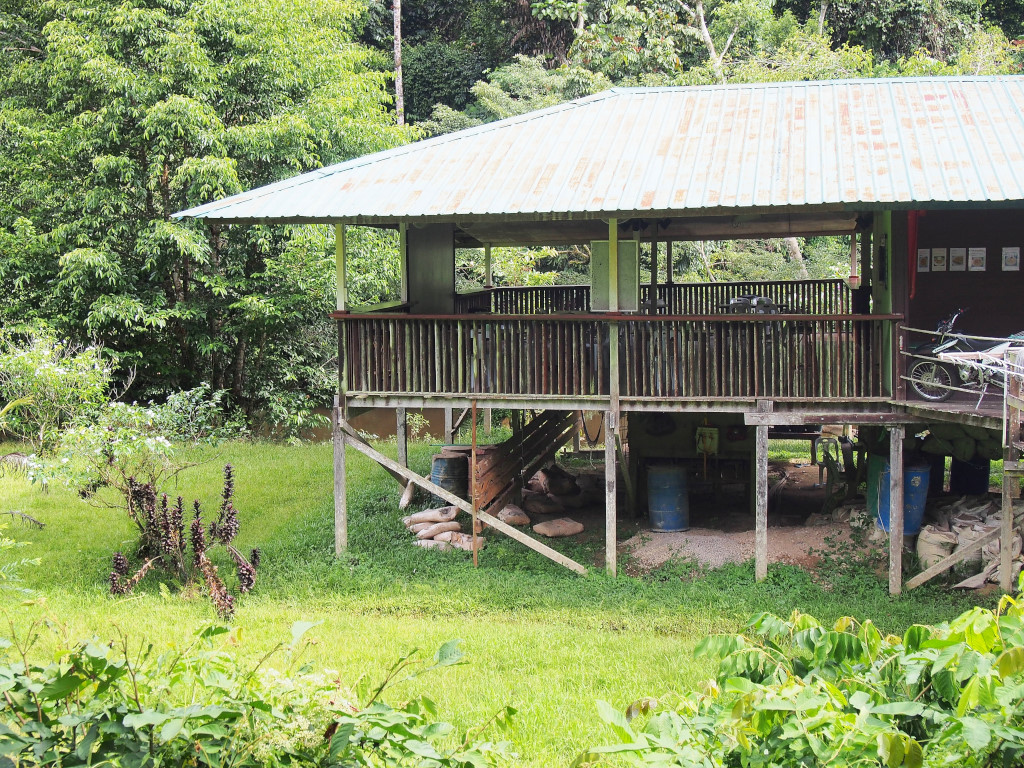
A long, low-slung suspension bridge crosses the turgid river to the entrance of the park. Placing one foot in front of the other while hanging onto the swaying structure’s railing, the thick foliage opens up towards the centre of the stream, revealing narrow vistas running to either side.
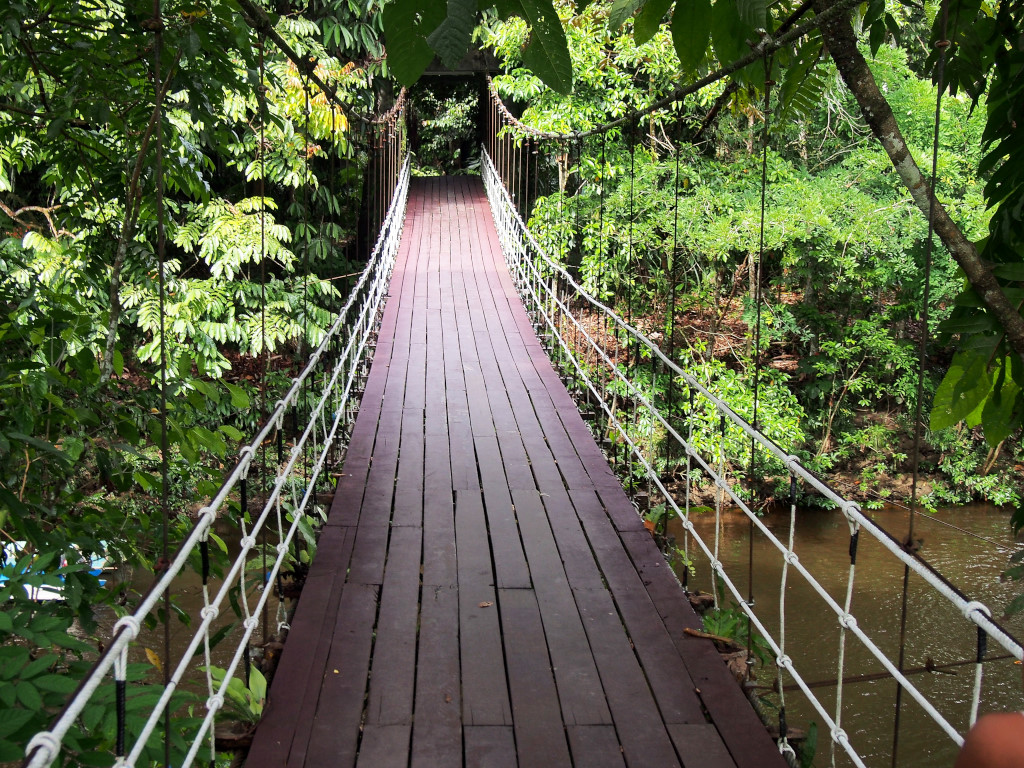
The relatively modern structure of the park headquarters comes as somewhat of a shock following the ragtag assortment of shacks on the far side of the river. Inside, a counter separates the interior of the office and the administrative staff from the public gathering to sign up for the variety of treks that takes place every day.
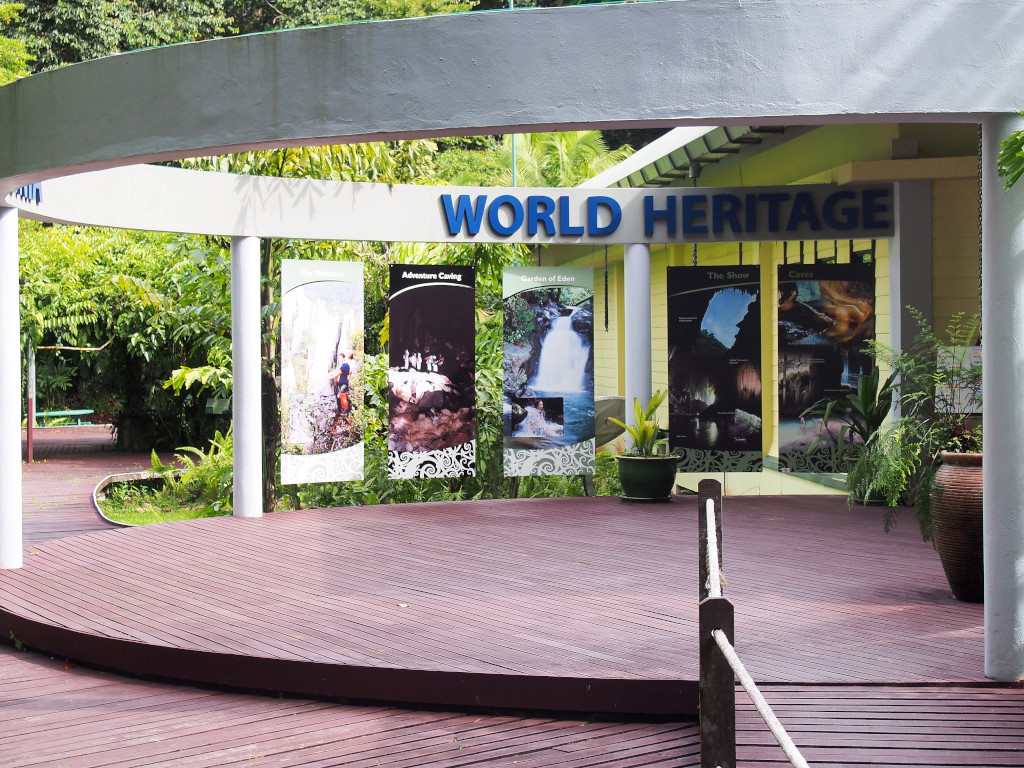
Perusing the lists for each hike and time slot set up along the counter, I can see that organizing guided treks in the park last minute may not be such a good idea. I am basically stuck signing up for anything for which there is room at this point, as there are not very many guided treks open the next few days.
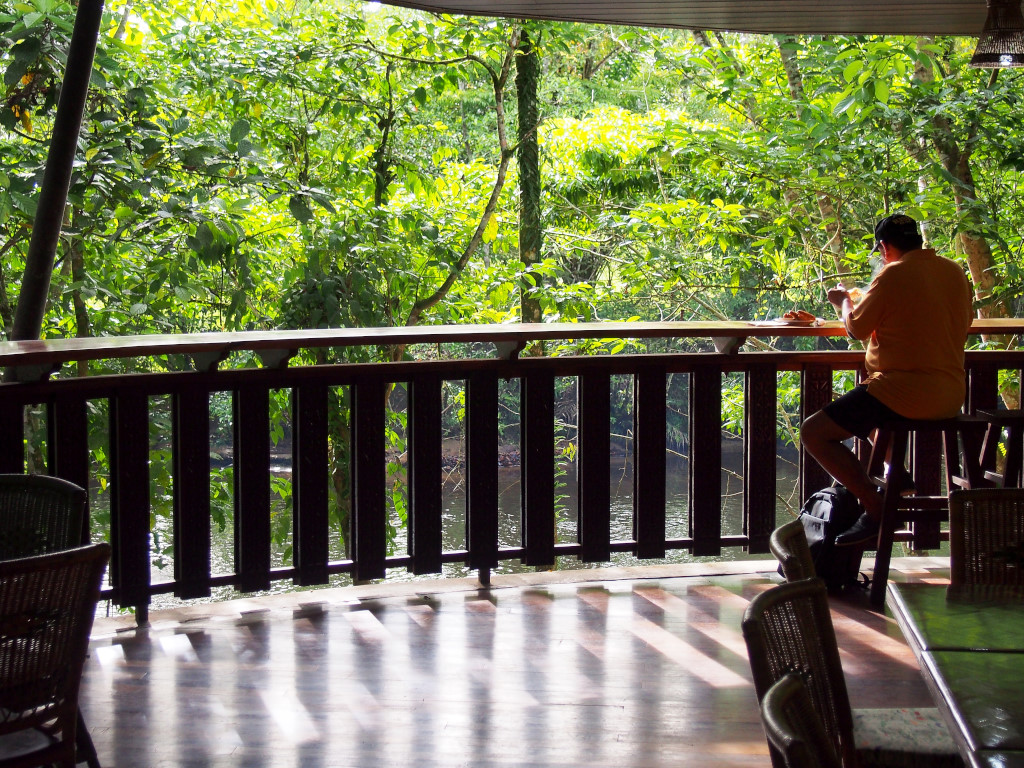
The signature hike is a multi-day trek to the Pinnacles, a series of 45 meter high, razor-sharp limestone spikes that tower above the surrounding vegetation, mid-way up the slopes of Gunung Api. In theory, this hike sounds very appealing, but I am honest with myself and have no intention of pursuing it. In circumstances closer to home, it would not be an issue, but in the tropical heat and humidity, I can barely walk a handful of steps in a straight line, never mind climb up steep and treacherous mountains.
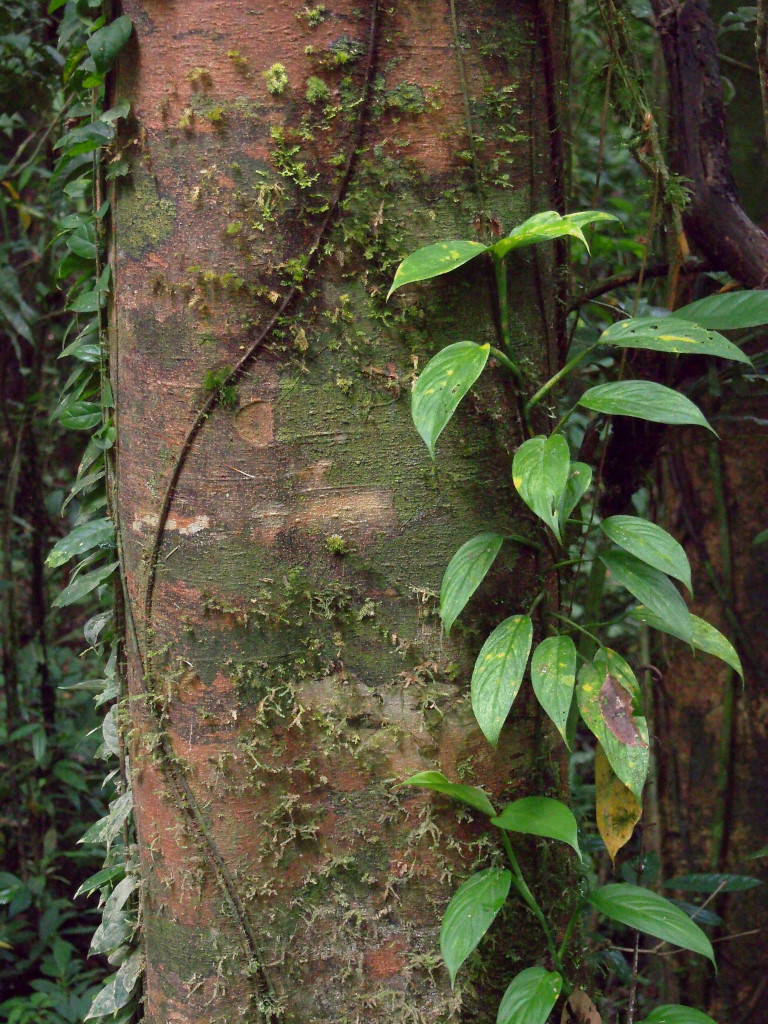
The fact that the Pinnacles trek is fully booked for the days to come proves to provide a convenient excuse to not take it on. Of course, it would have been better if I had actually done some planning with respect to the hiking possibilities on the trail, but here I am, having to stitch together the possibilities last minute. However, it is possible to independently traverse the proximity of the entrance by means of boardwalk trails that extend in various directions from the headquarters.
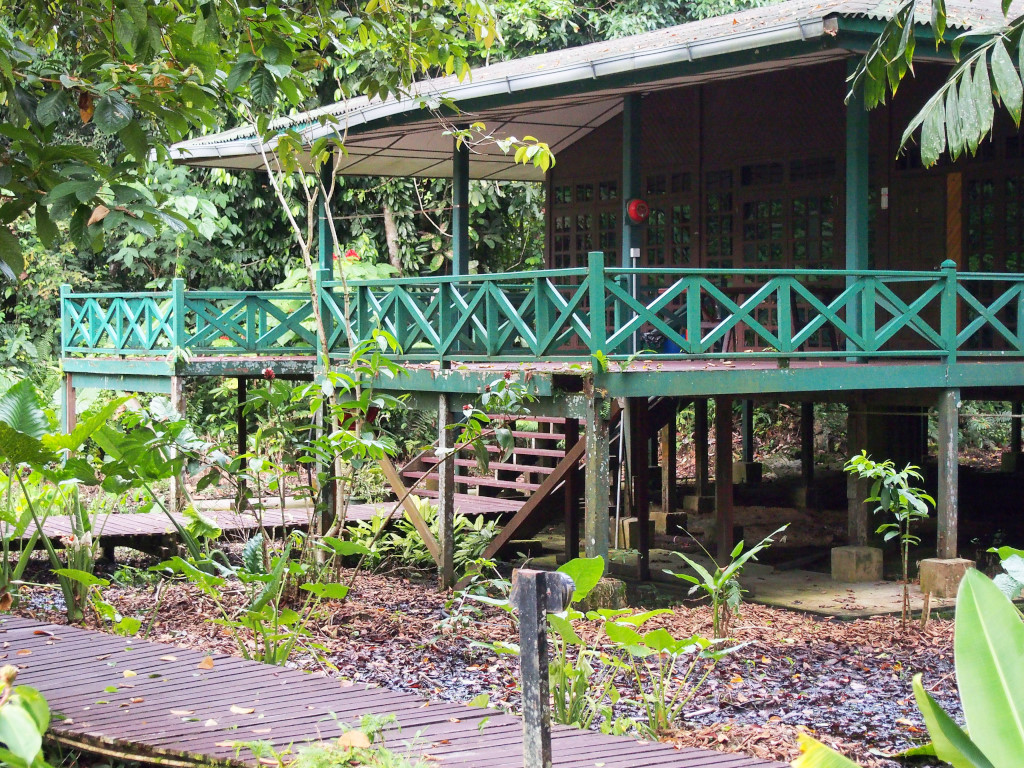
Immediately around the park headquarters are cabins and a hostel run by the park, substantially more expensive than the shabby places outside the park and on the far side of the river – and substantially more elegant. The cabins in fact are exercises in sheer luxury. I would love to be staying in such accommodation, but my budget is far too low to justify this kind of expenditure.
The cabins are allocated sufficient space to allow the unfettered local vegetation to flourish in their periphery, and are designed in a manner commensurate with traditional local architecture.
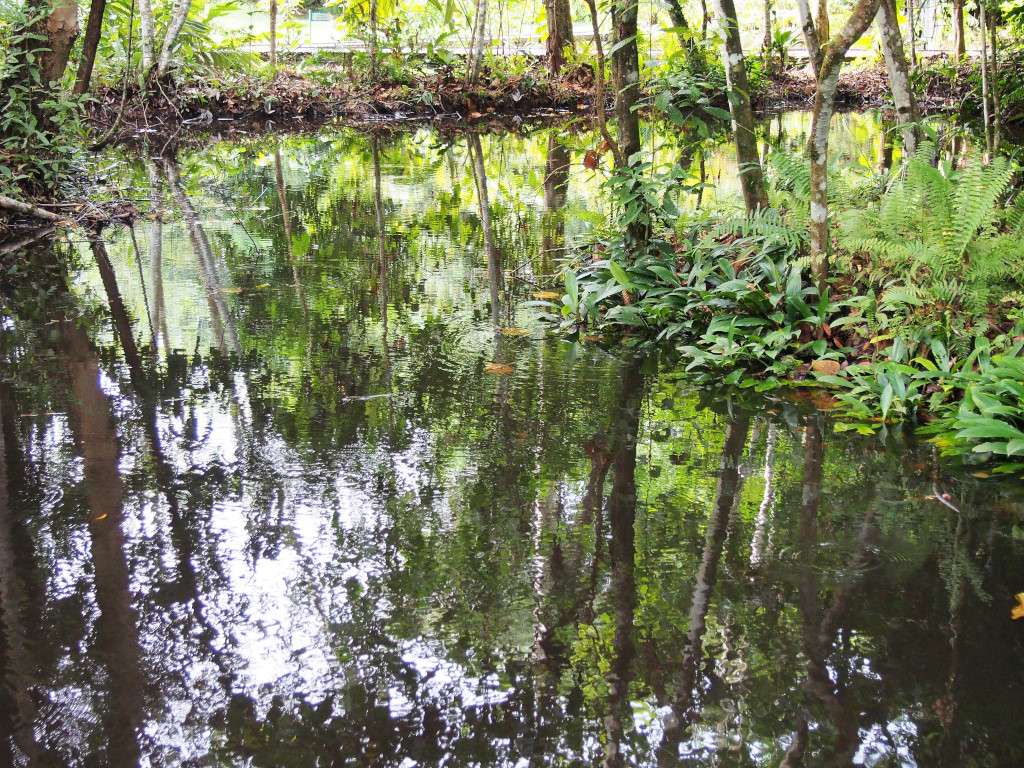
It is only possible to walk independently on the boardwalk trails. The limited scope of the boardwalk trails, set on the periphery of the extensive park occupying the northern tip of the state of Sarawak is not that troubling, considering that little of the accessible forest would be substantially different, at least to the novice visitor.
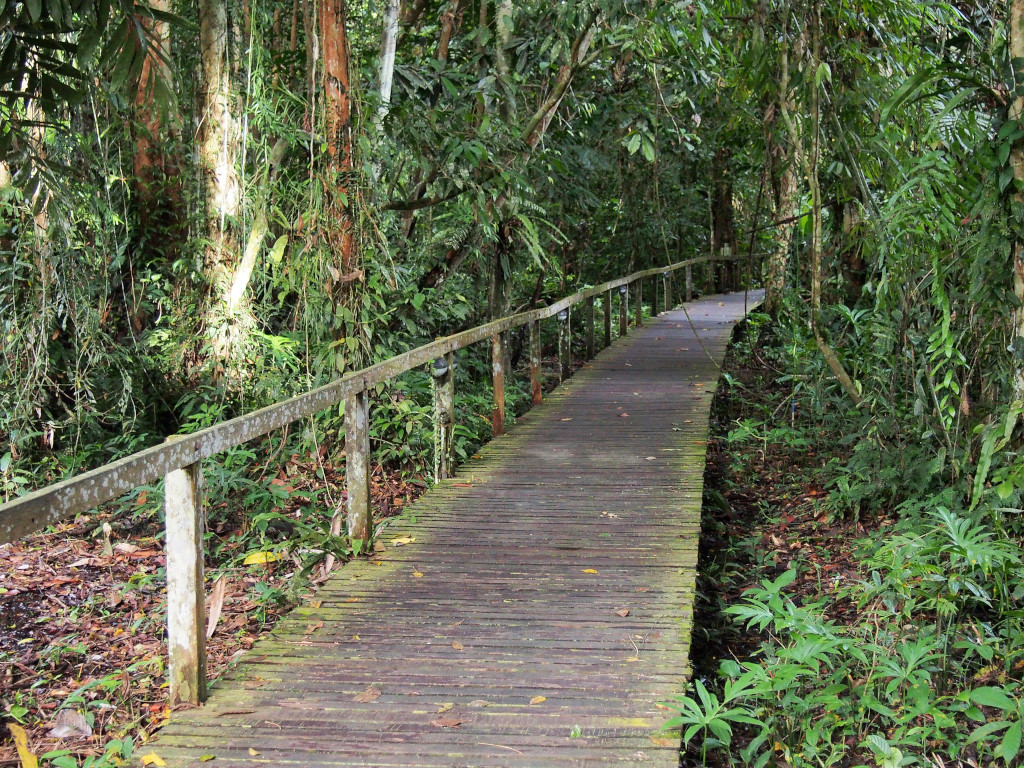
I descend down the Botany trail, the boardwalk raised off the ground to allow a clean and unfettered journey through the wall of dense tropical vegetation. The boardwalk represents a huge relief from any possibility of encountering any sinister creepy-crawlies, the chance of which would be huge in this area of the world.
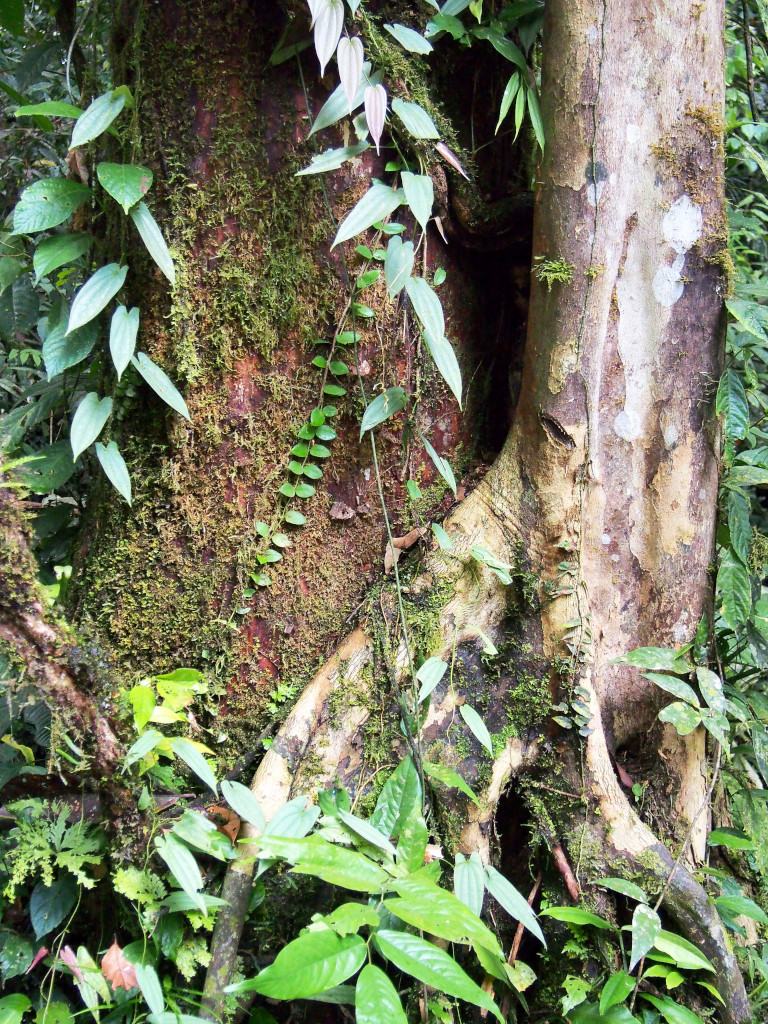
A description of the park paraphrased from the park’s website:
“Gunung Mulu National Park is one of the most spectacular national parks in Malaysia. It covers 544 sq km of primary rainforest, criss-crossed by rivers and dominated by three mountains, Gunung Mulu (2,376 m), Gunung Api (1,750 m) and Gunung Benarat (1,858 m). Yet many of Mulu’s greatest attractions lie deep below the surface – hidden underneath the forested slopes of these mountains is one of the largest limestone cave system in the world.
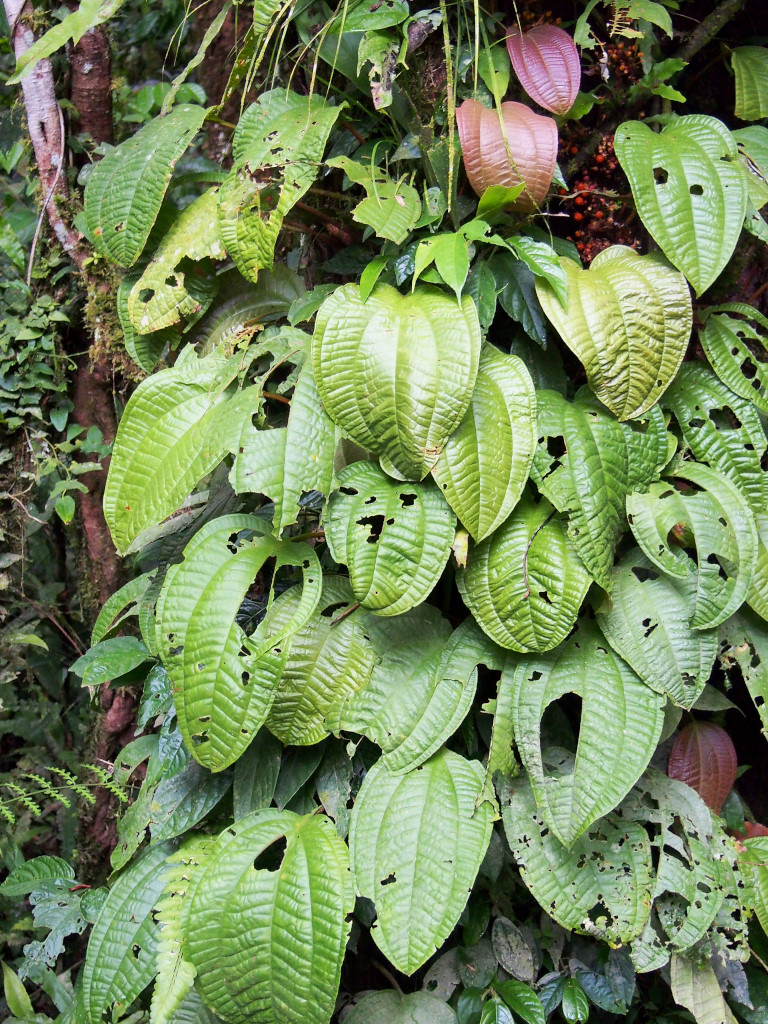
These caves include the world’s largest cave passage (Deer Cave), the world’s largest natural chamber (Sarawak Chamber), and the longest cave in Southeast Asia (Clearwater Cave). Over 200 Km of cave passages have been surveyed, but this is thought to represent just 30-40% of the actual total.
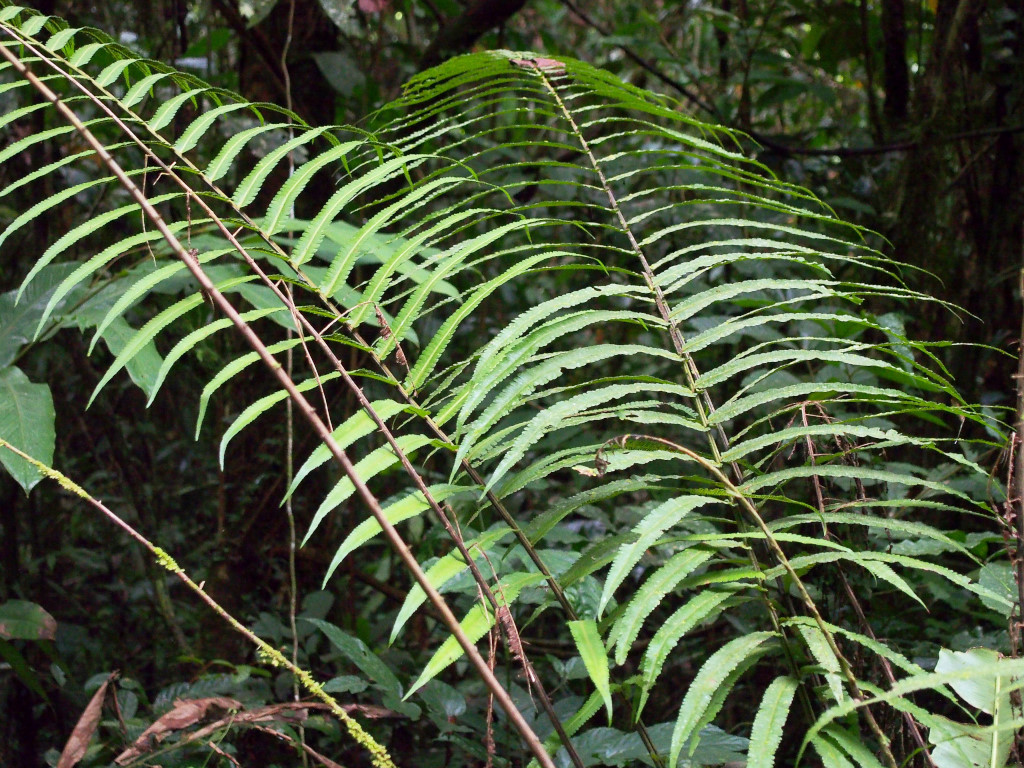
The oldest of Mulu’s caves started to form about 5 million years ago when sideways earth movements resulted in the formation of both limestone and sandstone mountains, lying side by side. Millions of years of heavy rain and the action of rivers and running water carved out the vast subterranean system that exists today. The weathering process still continues; dripping water creates new rock features, limestone is slowly worn away, and underground rivers carve and sculpt the caves, transporting limestone debris to the cave mouth or redistributing it within the system.
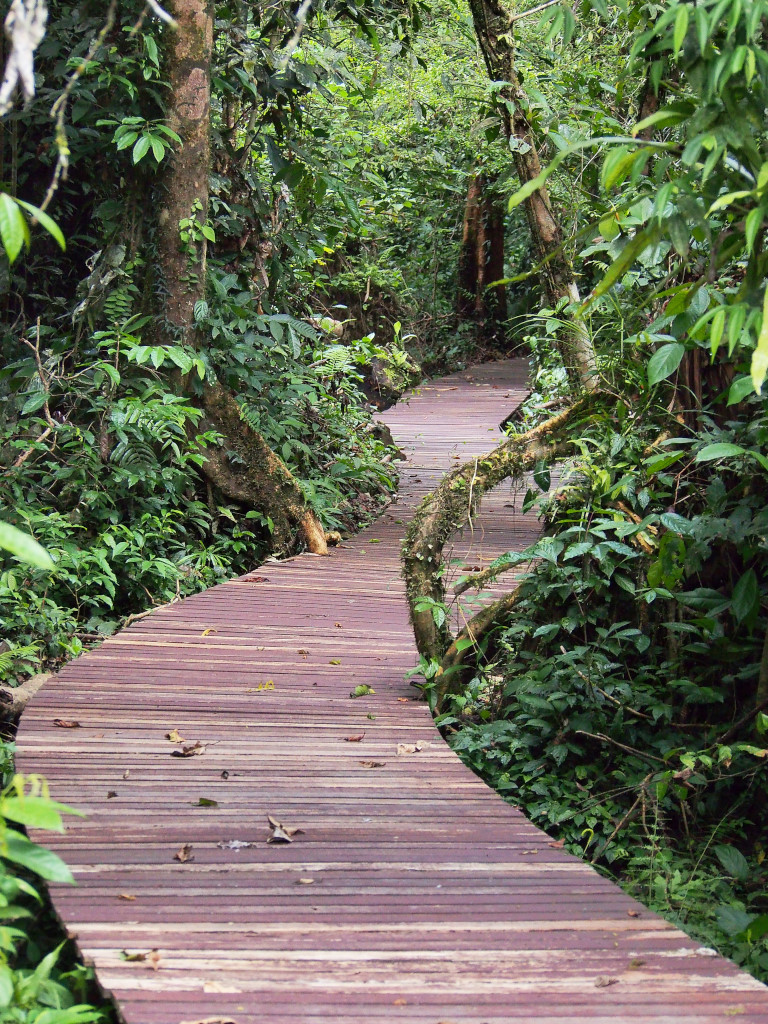
Gunung Mulu park contains 8 different types of forest, including peat swamp, heath, mixed dipterocarp, moss forest, and stunted upper montage vegetation. It features thousands of species ferns, fungi, mosses, and flowering plants, as well as 170 species of wild orchid, and 10 species of pitcher plant.
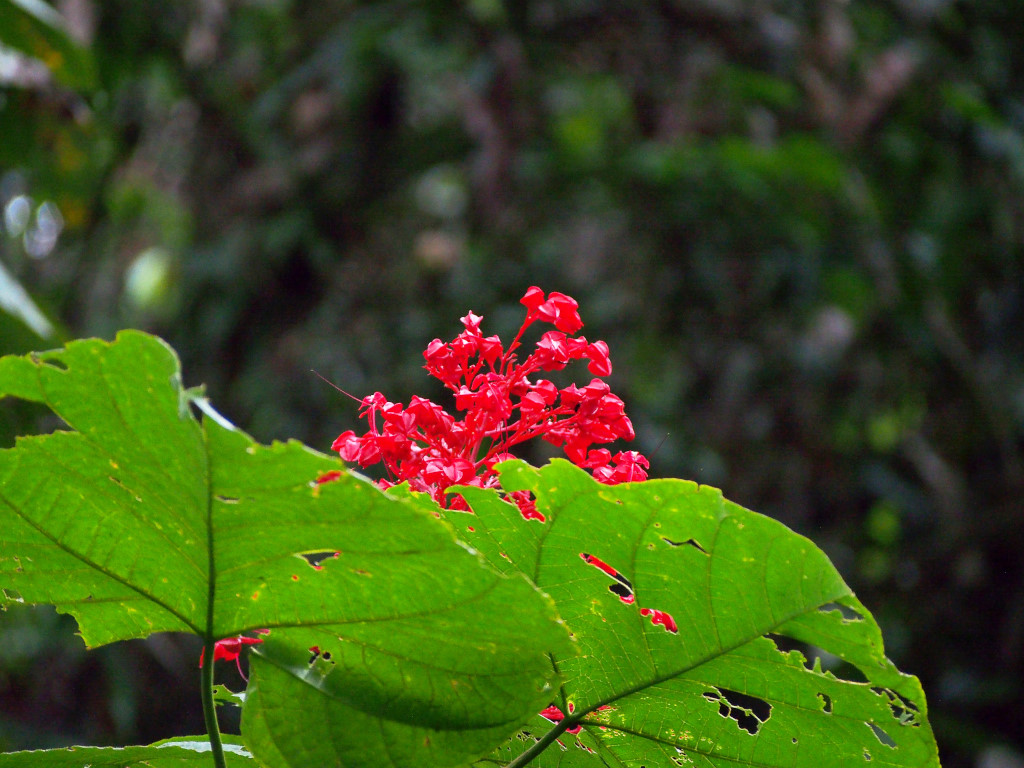
Mulu’s wildlife is equally impressive, and includes 75 species of mammals, 262 species of birds (including the eight species of hornbill found in Sarawak), 74 species of frogs, 47 species of fish, 281 species of butterflies, and 458 species of ants.”
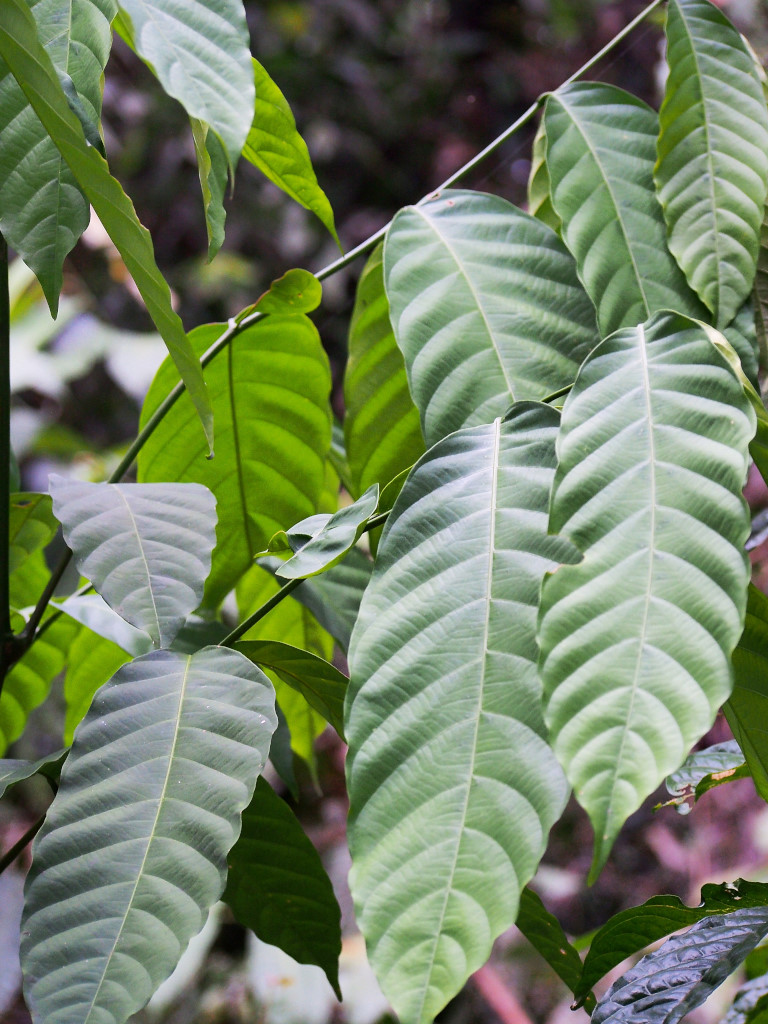
The operative thing around wildlife – over the course of your stay here, you have a chance of seeing some wildlife, but that’s about it. The forest is far too dense to spot animals beyond a short distance, and many animals are heavily camouflaged, furtive, or nocturnal. What’s more, any animals with protein value to humans will have been heavily exploited by poachers operating in the park’s periphery. Then the portions accessible to viewers lie immediately along the park boundary, so that endangered wildlife would tend to avoid the area.
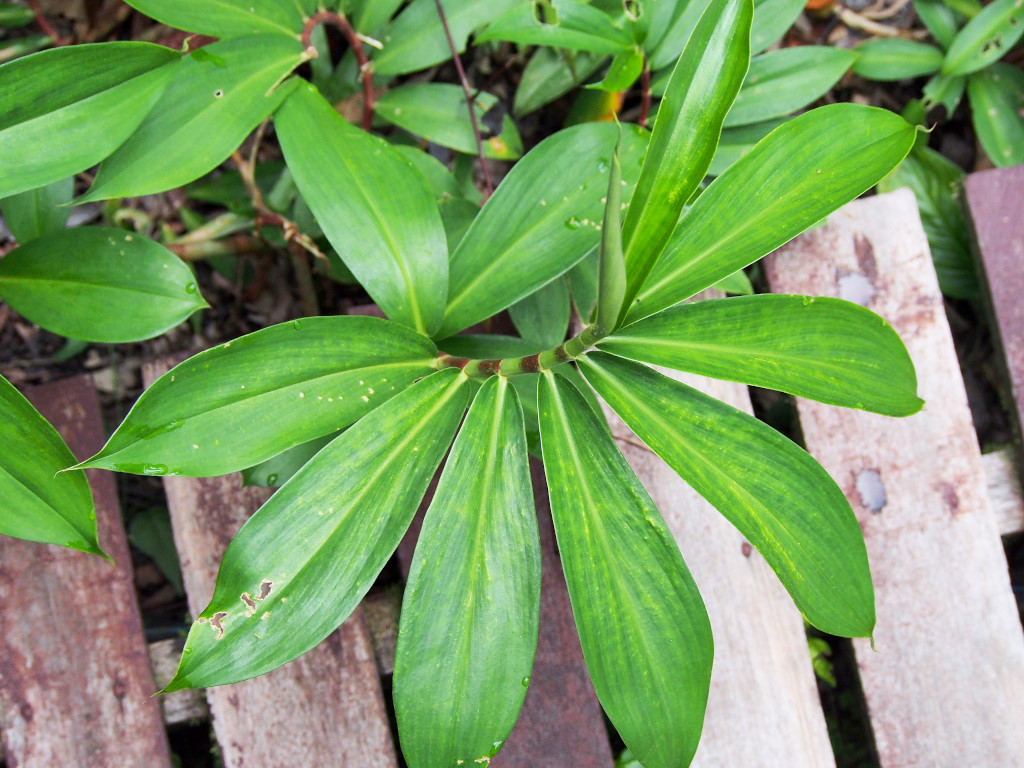
A plethora of vines and mosses abound, probably a lot of the plants orchid varieties. Of course, not all orchids are showy, in fact many bloom on a very ephemeral basis, with very innocuous flowers, and the plants are in no way memorable.
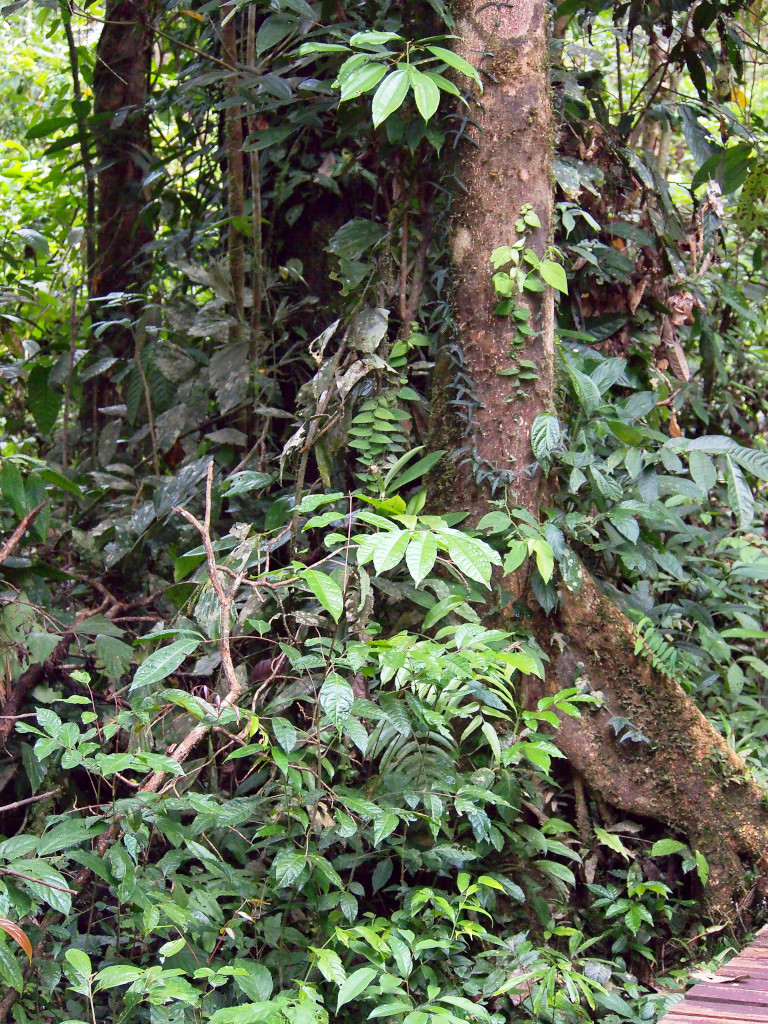
Having complete the day’s excursion, however modest, it is time to look for something to eat. The options in Mulu are exceedingly limited – there is a somewhat pricy cafeteria in the park, adjacent the headquarters, as well as the bungalow with the terrace looking out over the river outside the park entrance.
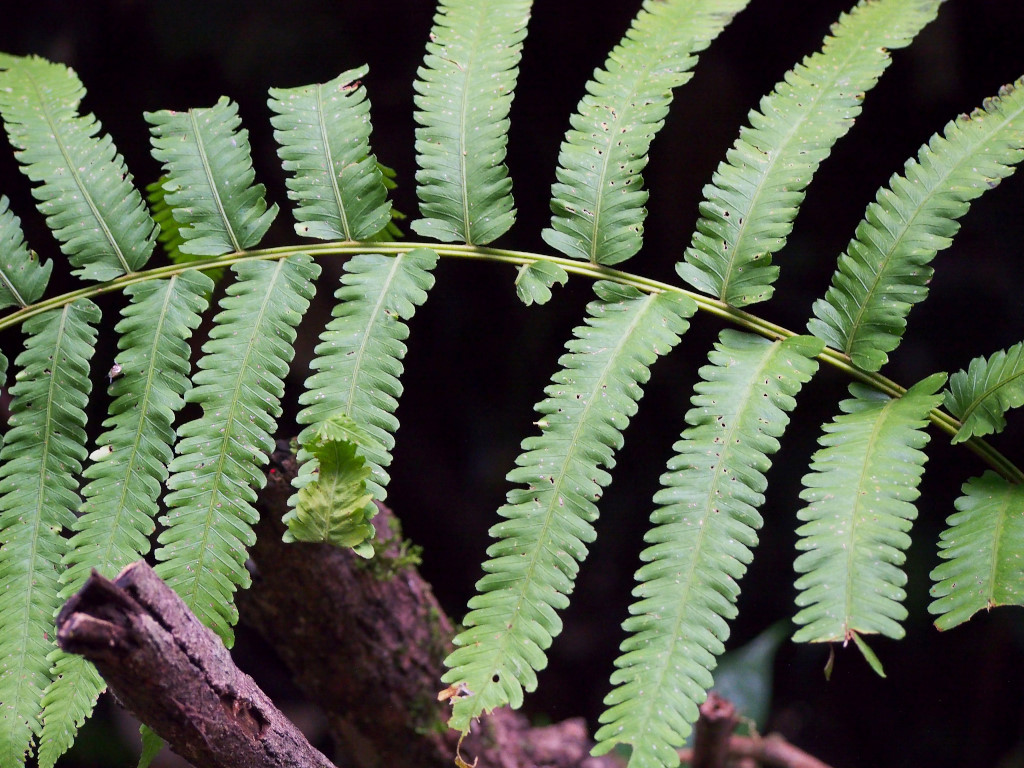
A raucous shout greets as I enter the terrace in the place next to the river, in a voice that sounds utterly unfamiliar, but then Frank emerges into my line of vision. He has been in the park a day or two already, but has taken full advantage of the time, having become intimate with the current park manager, a rambunctious Australian who has from her accounts led a fairly exciting life, her current incarnation no less exotic. And whatever shortfall she may experience being beholden to the isolation of this park, Frank’s presence has in short order made up for it.

Over beers, we exchange stories, the effect of alcohol supplemented by the unusual and exotic setting. She rolls her head as she speaks, her eyes rotating emphatically in their sockets, gesticulating slightly, the mild Australian drawl amplifying, her speech thickening with Australian hippie inflections. She had actually accepted this job shortly after having slid down a long staircase following an extended yoga session in Vietnam, which resulted in her cracking a number of ribs.
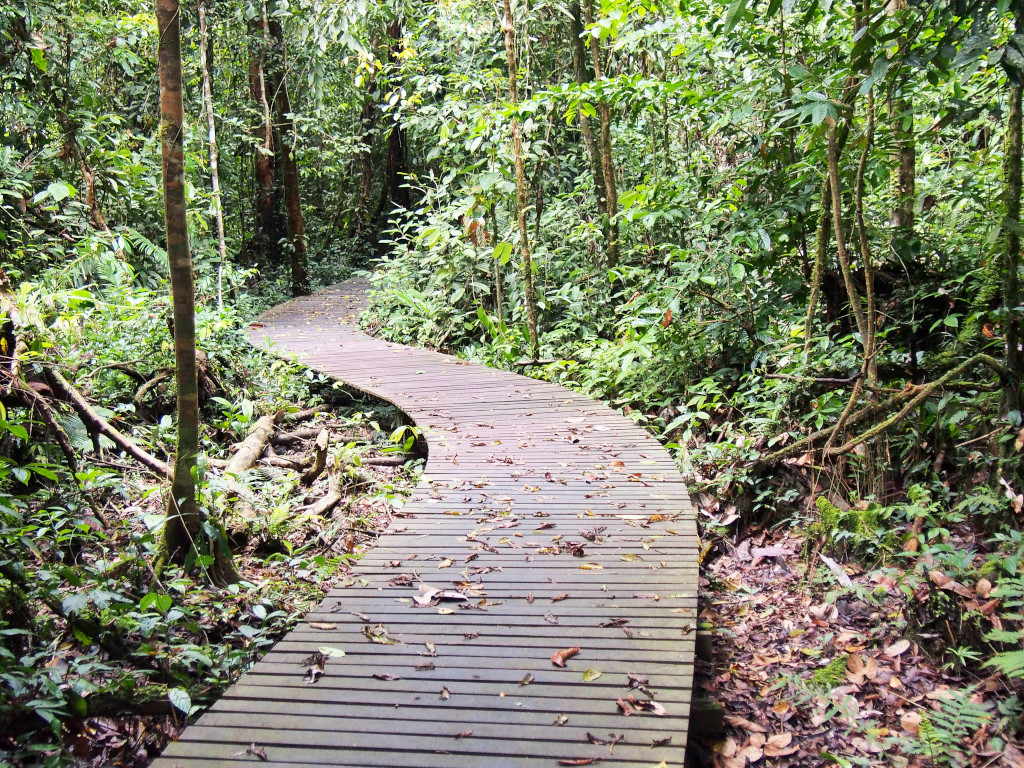
Apropos of nothing, she recounts the story of taking a tall ship 25 years ago from Australia to France. A week into the trip somewhere into the Indian Ocean, they encountered a massive cyclone that lasted some three or four days, the boat listing violently from one side to the other.
Three people had to clamp down the rudder to keep the boat from capsizing in the ferocious winds and waves. At one point they looked behind them to see a gigantic wave bearing down on the boat, crashing half way down the 130 foot boat, and breaking the boat’s two masts.
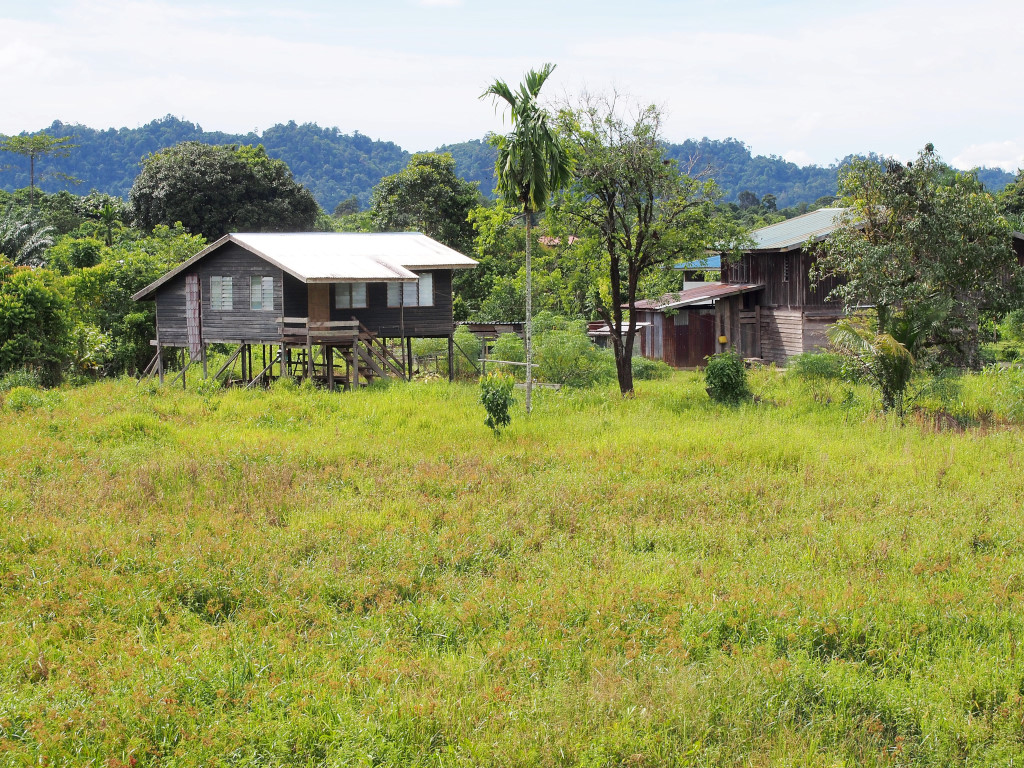
The manic Algerian owner hounded his crew members relentlessly. He cut an entirely unsympathetic figure, although her Swedish cohort was intent on playing the man to the fullest, and extracting every demand the volunteer crew had, irrespective of how difficult the owner was.

‘You have to play the game’ the Swede confided with Alison, but Alison values her integrity more than the possible benefits accruing from playing the game. She laughs and tosses her head, drawling with a slight contemptuousness as she recounts probably some of the tensest moments of her life.
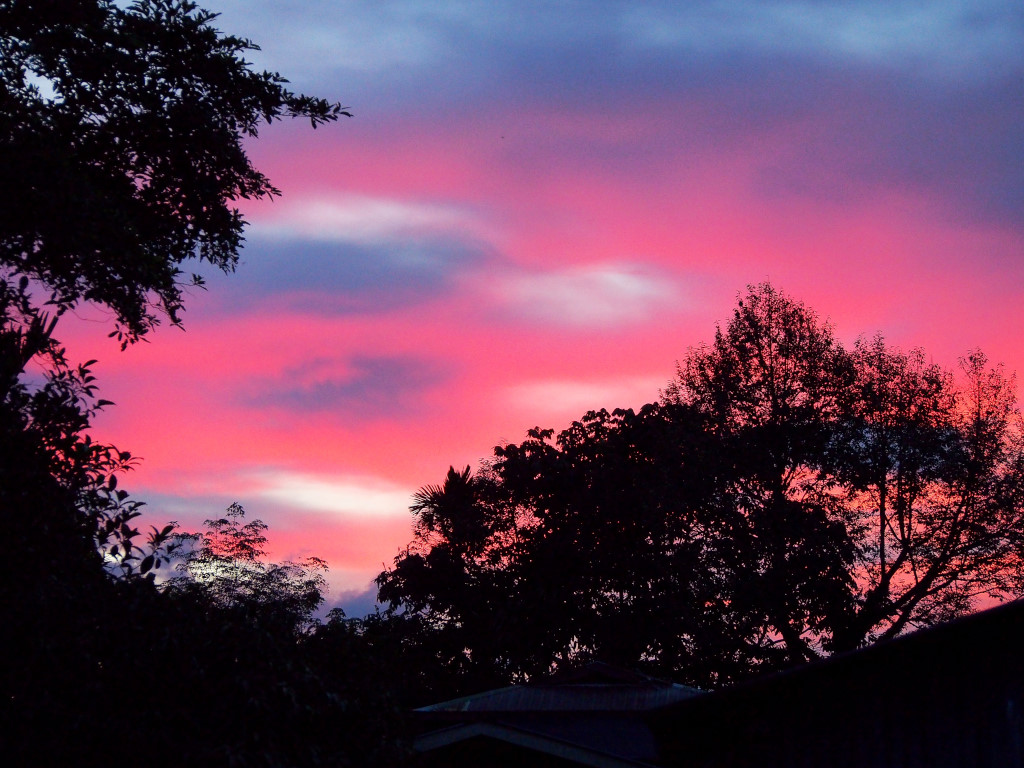
Frank rests his arm on the back of her chair, a slight sense of disquietude broaching his face, her narrative perhaps a bit outside of his comfort zone, if only momentarily.
She continues on the subject of racial aspects of local governance. Despite the amount of orang asli and Chinese living here, the government is entirely dominated by Malays, and hiring in government overwhelmingly prefers Malays – despite the fact that orang asli are recognized under the Bhumi Putera laws.


